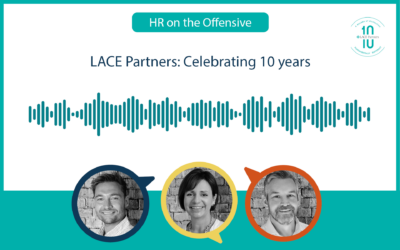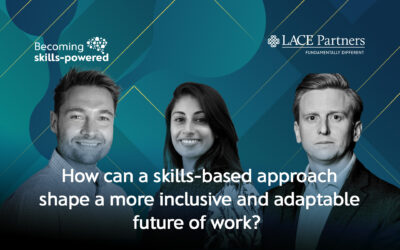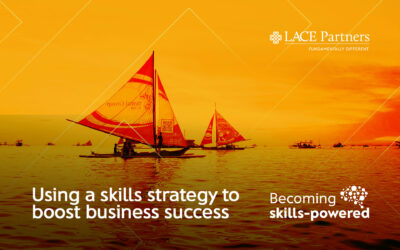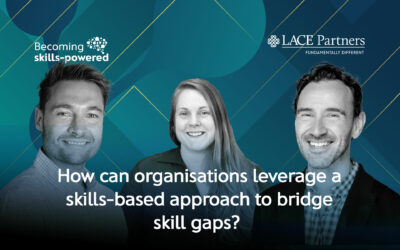Our partners Applaud recently launched a whitepaper entitled ‘The Future of HR: Employee experience fuelled by consumer-grade technology’ and in the latest HR on the Offensive Podcast Chris and Luka spoke to Jordan Robinson about some of the key themes.
What did the report tell us about the top priorities for HR leaders in 2021 and beyond? Why – from an employee experience (EX) perspective – can technology have such an impact on people’s productivity? Read on for a summary of these key points.
Digital transformation top of the agenda for HR leaders
52% of HR professionals surveyed stated that digital transformation is their highest priority. This tells us that for the 175 senior HR professionals who contributed to the report that their existing tech landscape from 2019 is no longer fit for purpose in the current world of work.
An interesting picture was formed analysing the top two other priorities for HR professionals; employee experience strategy and workplace technology. It is evident that these areas of focus play an increasingly important role in employees’ daily working lives and leaders are recognising that workplace technology is a critical priority.
Technology can frustrate from an EX-perspective if it’s not solving employee needs
Delivering a ‘consumer grade experience’ (think: how you interact with tech in your personal life – Amazon, Spotify, etc – where you don’t need an instruction manual) has not yet translated across into the world of work. In the last decade we have seen massive investments in ‘best of breed’ HR technology but the tools are not yet seen as comparably intuitive. This can lead to frustrated employees whose expectations from technology are higher, and who do not want to spend time on repetitive manual tasks.
If you get your digital employee experience wrong, technology is not a silver bullet for productive and happy employees. If your EX strategy is not executed correctly it can create wider challenges for your workforce, especially considering the amplified numbers of people who are reliant on digital employee experience since the pandemic started. If you started a role in 2020 or 2021 the only experience you know is a digital one. So getting that right is vital.
Historically a HR platform existed to combine and process your HR activity. It wasn’t originally imagined to be a full spectrum employee experience solution in the way it is now. As a result, we now find ourselves in a landscape with multiple platforms that an employee is expected to interact with (for example HRIS platforms, wellbeing platforms, pensions platforms, share save schemes, etc). This is often also combined with an intranet platform which can duplicate the content that is found on these different platforms. So as an employee where do you go? This set up is a far cry from the expected ‘consumer grade experience’ mentioned above.
How many systems is too many systems?
In the report 84% of organisations admitted to having between six and 15 HR systems in place, with 75% intending to continue to expand or upgrade. Given what we’ve discussed around technology becoming difficult to navigate if you have so many places to find information, this begs the question: how much technology is too much technology?
If you consider the full employee lifecycle, that number is probably going to be a lot higher than you might expect; technologies will range from those for submitting expenses to those for raising a procurement request and more.
Perhaps the focus should shift away from how much and move towards focusing on what makes a world-class consumer-grade experience and how can we apply that through an employee experience lens? After all, if the systems are easy enough to use and simplify an employee’s life, are they going to be as concerned with how many systems they are using? People don’t usually worry about having too many apps on their phone if they are all seen as useful.
Treating your employees like the customers of your business is key in asking the right questions. Are HR leaders asking the right questions to give the best employee-experience possible? Rather than looking at integrating more tech into the business, focus on consolidating what you already have so you deliver the most seamless service.
How do you measure a good EX?
What does good EX look like? How do you get CFOs and CIOs to understand the tangible value that it brings? It has been a challenge that EX-specialists have wrestled with for many years. Being able to measure productivity is key. The report highlights how 90% of the businesses involved in the survey believed their business was spending between two to four hours per week on HR tasks. If that is true across most businesses, accurately measuring time spent via good data and analytics systems becomes essential. This will allow you to link EX to the value it can add to the bottom line of a business.
If you can track how long employees are taking to get access to certain information – like policy documents for maternity leave for example – then you can work to streamline this process through automation. Rather than taking 20 minutes to find a document or a couple of phone calls to HR – it can take a matter of seconds. After that you can start to quantify time saved which translates into cost savings as employees have time to undertake work that adds more value to the business.
Efficiency for both employee and the HR team
Efficiency and productivity savings aren’t just linked to the employee. In the podcast an example was given of a colleague of Jordan’s who spoke of receiving hundreds – perhaps thousands – of email messages each week from employees looking for where to find payslip information. A new service desk was put in place, but the result was that those thousands of emails translated into thousands of tickets raised instead. Automating those processes can add value but because the processes did not improve the user journey to the point where they got the information they needed – payslip info, maternity leave policies, etc – it resulted in little difference for the HR operations team.
If you get EX right you not only improve productivity and value for the employee but also for the HR team, which frees them up to focus on other tasks. In the Future of HR Shared Services: Becoming People Solutions Experts whitepaper we discuss the importance of the evolving role of the HR Shared Services professional and outline the evolution of the ‘Business Partner’ to the ‘Business Adviser’. A business advisor would move away from repetitive tasks and focus instead on supporting employees with coaching, change management, relationship management, project management, risk and governance. By allowing HR teams to focus on less day to day issues it frees them to be more strategic and make greater positive impacts to the wider business.
If you’d like to discuss some of the topics in today’s blog you can reach out to us. If you’d like to listen to the whole podcast, you can do so here.






